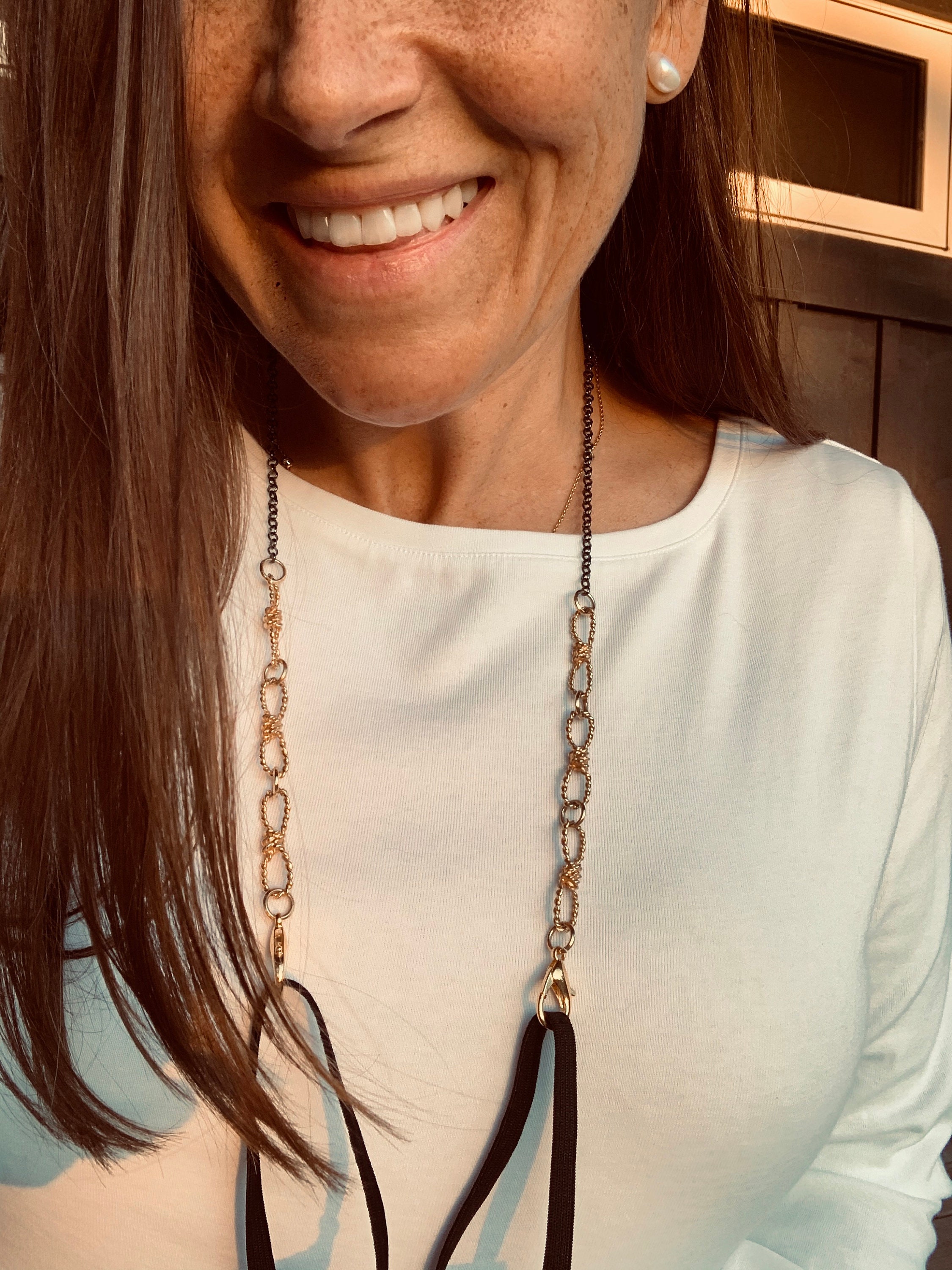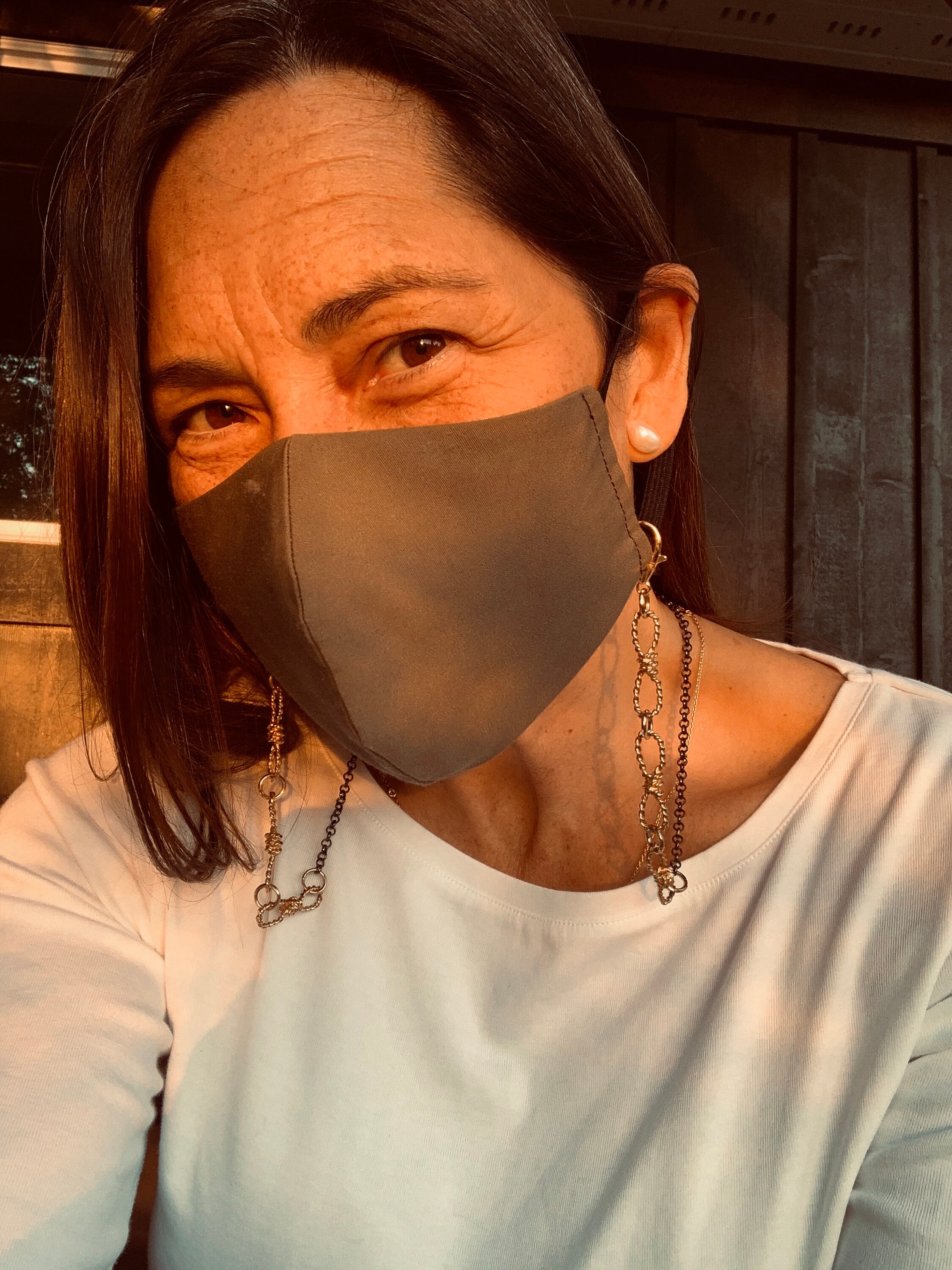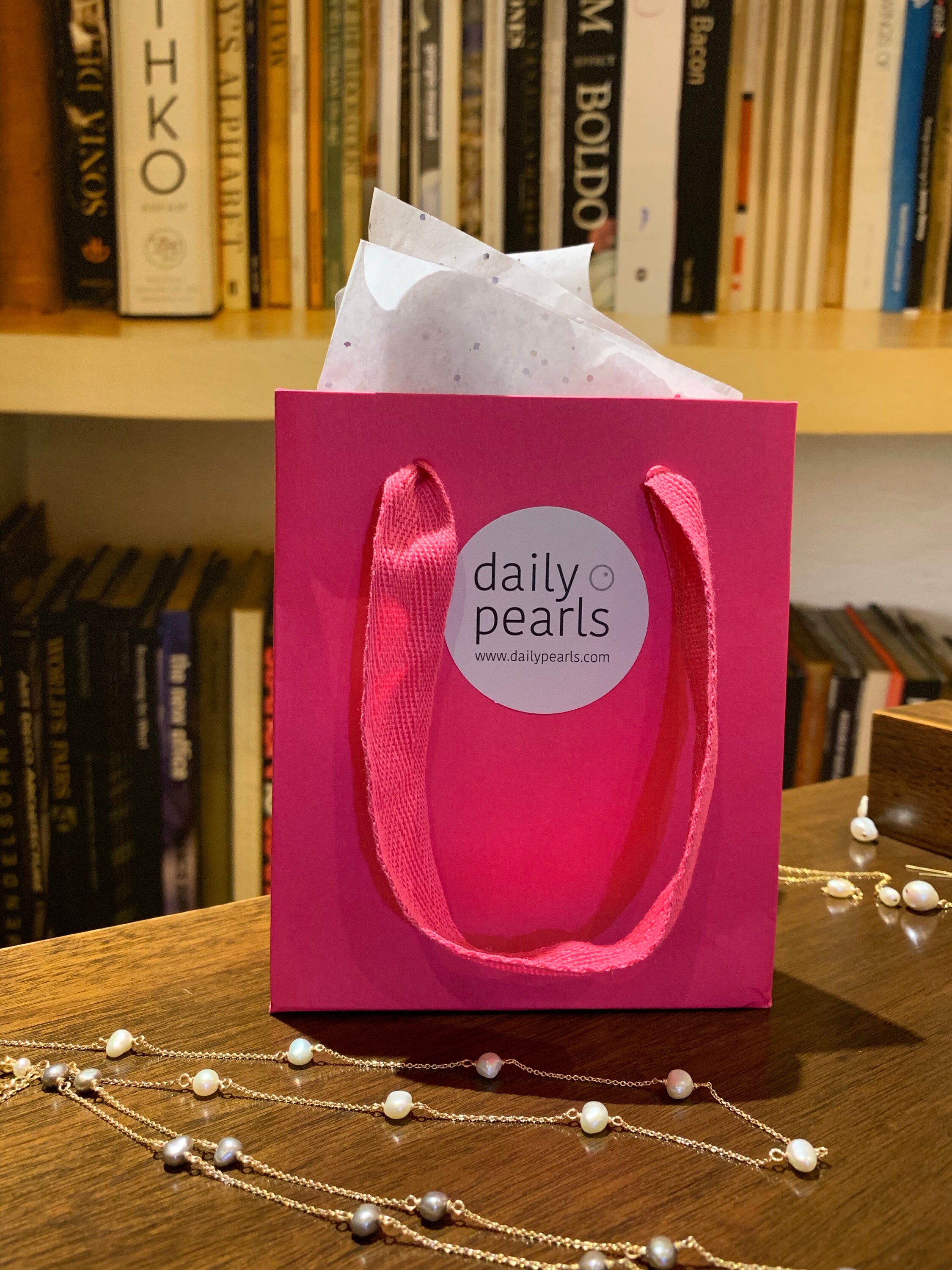One-of-a-Kind Face Mask Chain Made with Vintage Gold and Black Chain and Extra-Large Lobster Clasps, On-Trend and Chic
This one-of-a-kind face mask chain is made with links from a fabulous vintage gold necklace and in the back, smooth, black vintage chain. The chain is 25 inches long, which works for almost adults. It's a comfortable weight, so it won't weigh down your mask.
The mask attaches to the chain with a matching extra-large gold lobster clasps, which make it easy to change your mask. These clasps are great for all sizes of mask elastics and ties, including large ones.
$5 from each mask hanger will go be donated to the Avenue Road Food Bank, Toronto, Ontario.
Shipping is included, and hangers will be sent by regular mail, which is quite slow right now. If you would like to upgrade to UPS, there will be an additional $15 CAD charge, which you can select below.
Please note that this listing is for the holder only. It does not include the mask.
To keep your pearls looking their best, they should be the last thing you put on and the first thing you take off. Avoid getting perfume, hairspray, lotion, or any other chemical on them, and wipe them off right away if you do. Keep them out of water, where hair products, chlorine, or salt water could dull or discolour them. Water can also weaken the bond between the pearl and the post.
As popular as pearls are, the range of varieties and prices can get confusing. Here's what you need to know:
1) Almost every real pearl on today's market, regardless of variety, is “cultured.” A cultured pearl is grown in an ocean or a lake, and develops around a nucleus or irritant which is placed in an oyster or mollusk. The final product is created by nature, albeit with man’s help.
2) “Natural” pearls are pearls that have been found in oysters. Natural pearls found today sell for tens of thousands of dollars. Many natural pearls on the market are in antique pieces, and come with gemological x-ray certification.
3) The highest-priced cultured pearls are cultured in seawater, and there are three main varieties: Akoya, Tahitian, and South Sea. Akoya pearls, grown off the coast of Japan, were the first saltwater pearls to be cultured, and became the "classic" pearls your grandmother might have worn. Tahitian pearls, which are grown around Tahiti, grow naturally in shades of grey and black, and were developed in the 1970s. South Sea pearls, grown in the Southern Hemisphere, were developed more recently, and are considered by many to be the most desirable pearls.
4) Daily Pearls makes jewellery from cultured freshwater pearls, which are the most affordable variety of cultured pearls. China produces most of the world's freshwater pearls, many of which are unusually shaped, or "baroque."
5) Plastic or glass imitations of cultured pearls are called “simulated” pearls. You can tell the difference between cultured and simulated pearls by touching one to the top of your bottom teeth. If it feels gritty, the pearl is real. If it feels like plastic or glass, it is not a cultured pearl.
Let us know if we can help you with your pearl shopping!




